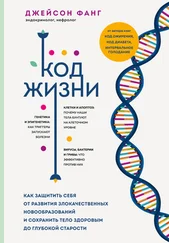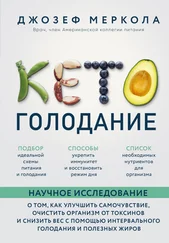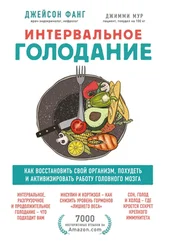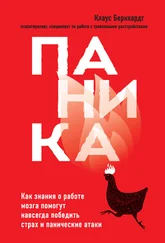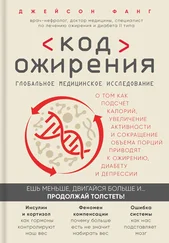Albert Stunkard and Mavis McLaren-Hume, “The Results of Treatment for Obesity: A Review of the Literature and Report of a Series,” AMA Archive of Internal Medicine 103, no. 1 (1959): 79–85.
Alison Fildes, Judith Charlton, Caroline Rudisill, Peter Littlejohns, A. Toby Prevost, and Martin C. Gulliford, “Probability of an Obese Person Attaining Normal Body Weight: Cohort Study Using Electronic Health Records,“ American Journal of Public Health 105, no. 9 (2015): e54– e59, doi:10.2105/AJPH.2015.302773.
Barbara V. Howard, Jo Ann E. Manson, Marcia L. Stefanick, Shirley A. Beresford, Gail Frank, Bobette Jones, Rebecca J. Rodabough, et al., “Low-Fat Dietary Pattern and Weight Change over 7 Years: The Women’s Health Initiative Dietary Modification Trial,” JAMA 295, no. 1 (2006): 39–49.
“Best Weight-Loss Diets,” US News & World Report, n.d., http://health.usnews.com/best-diet/biggest-loser-diet, Centers for Disease Control, Obesity Prevalence Maps, September 11, 2015, http://www.cdc.gov/obesity/data/prevalence-maps.html.
Christian Zauner, Bruno Schneeweiss, Alexander Kranz, Christian Madl, Klaus Ratheiser, Ludwig Kramer, Erich Roth, Barbara Schneider, and Kurt Lenz, “Resting Energy Expenditure in Short-Term Starvation Is Increased as a Result of an Increase in Serum Norepinephrine,” American Journal of Clinical Nutrition 71, no. 6 (2000): 1511–1515.
Darcy L. Johannsen, Nicolas D. Knuth, Robert Huizenga, Jennifer C. Rood, Eric Ravussin, and Kevin D. Hall, “Metabolic Slowing with Massive Weight Loss Despite Preservation of Fat-Free Mass,” Journal of Clinical Endocrinology and Metabolism 97, no. 7 (20120): 2489–2496.
Diabetes Prevention Program Research Group, “Reduction in the Incidence of Type 2 Diabetes with Lifestyle Intervention or Metformin,” New England Journal of Medicine 346 (2002): 393–403.
Erin Fothergill, Juen Guo, Lilian Howard, Jennifer C. Kerns, Nicolas D. Knuth, Robert Brychta, Kong Y. Chen, et al., “Persistent Metabolic Adaptation 6 Years After ‘The Biggest Loser’ Competition,” Obesity (2016), online May 2, doi: 10.1002/oby.21538.
Frank Q. Nuttall, Rami A. Almokayyad, and Mary C. Gannon, “Comparison of a Carbohydrate-Free Diet Vs. Fasting on Plasma Glucose, Insulin and Glucagon in Type 2 Diabetes,” Metabolism: Clinical and Experimental 64, vol. 2 (2015): 253–262.
Gina Kolata, “After ‘The Biggest Loser,’ Their Bodies Fought to Regain Weight,” New York Times, May 2, 2016, http://www.nytimes.com/2016/05/02/health/biggest-loser-weight-loss.html.
Hodan Farah Wells and Jean C. Buzby, Dietary Assessment of Major Trends in U.S. Food Consumption, 1970–2005, US Department of Agriculture: Economic Research Service, Economic Information Bulletin, Number 33, March 2008. http://www.ers.usda.gov/media/210681/eib33_1_.pdf.
Ildiko Lingvay, Eve Guth, Arsalla Islam, and Edward Livingstone, “Rapid Improvement in Diabetes After Gastric Bypass Surgery: Is It the Diet or Surgery?” Diabetes Care 36, no. 9 (2013): 2741–2747.
J. Gjedsted, L. Gormsen, M. Buhl, H. Nørrelund H, O. Schmitz, S. Keiding, E. Tønnesen, et al., “Forearm and Leg Amino Acids Metabolism in the Basal State and During Combined Insulin and Amino Acid Stimulation After a 3-Day Fast,” Acta Physiologica 197, no. 3 (2009): 197–205.
John B. Dixon, Paul E. O’Brien, Julie Playfair, Leon Chapman, Linda M. Schachter, Stewart Skinner, Joseph Proietto, et al., “Adjustable Gastric Banding and Conventional Therapy for Type 2 Diabetes,” JAMA 299, no. 3 (2008): 316–323.
Maarten R. Soeters, Nicolette M. Lammers, Peter F. Dubbelhuis, Mariëtte Ackermans, Cora F. Jonkers-Schuitema, Eric Fliers, Hans P. Sauerwein, et al., “Intermittent Fasting Does Not Affect Whole-Body Glucose, Lipid, or Protein Metabolism,” American Journal of Clinical Nutrition 90, no. 5 (2009): 1244–1251.
Maureen Callahan, “‘We’re All Fat Again’: More ‘Biggest Loser’ Contestants Reveal Secrets,” New York Post, January 25, 2015, http://nypost.com/2015/01/25/were-all-fat-againmore-biggest-loser-contestants-reveal-secrets.
M. N. Harvie, M. Pegington, M. P. Mattson, J. Frystyk, B. Dillon, G. Evans, J. Cuzick, et al., “The Effects of Intermittent or Continuous Energy Restriction on Weight Loss and Metabolic Disease Risk Markers: A Randomized Trial in Young Overweight Women,” International Journal of Obesity 35, no. 5 (2011): 714–722.
Nicolas D. Knuth, Darcy L. Johannsen, Robyn A. Tamboli, Pamela A. Marks-Shulman, Robert Huizenga, Kong Y. Chen, Naji N. Abumrad, et al., “Metabolic Adaptation Following Massive Weight Loss Is Related to the Degree of Energy Imbalance and Changes in Circulating Leptin,” Obesity 22, no. 12 (2014): 2563–2569.
Roberto A. Ferdman, “One of America’s Healthiest Trends Has Had a Pretty Unexpected Side Effect,” Washington Post, May 24, 2016, https://www.washingtonpost.com/news/wonk/wp/2016/05/24/one-of-americas-healthiesttrends-has-had-a-pretty-unexpectedside-effect.
Sai Krupa Das, Susan B. Roberts, Megan A. McCrory, L. K. George Hsu, Scott A. Shikora, Joseph J. Kehayias, Gerard E. Dallal, et al., “Long-Term Changes in Energy Expenditure and Body Composition After Massive Weight Loss Induced by Gastric Bypass Surgery,” American Journal of Clinical Nutrition 78, no. 1 (2003): 22–30.
Samuel Klein, Luigi Fontana, V. Leroy Young, Andrew R. Coggan, Charles Kilo, Bruce W. Patterson, et al., “Absence of an Effect of Liposuction on Insulin Action and Risk Factors for Coronary Heart Disease,” New England Journal of Medicine 350, no. 25 (2004): 2549–2557, doi: 10.1056/NEJMoa033179.
Thomas E. Inge, Anita P. Courcoulas, Todd M. Jenkins, Marc P. Michalsky, Michael A. Helmrath, Mary L. Brandt, Carroll M. Harmon, et al., “Weight Loss and Health Status 3 Years After Bariatric Surgery in Adolescents,” New England Journal of Medicine 374, no. 2 (2016): 113–123, doi: 10.1056/NEJMoa1506699.
W. J. Pories, K. G. MacDonald Jr., E. J. Morgan, M. K. Sinha, G. L. Dohm, M. S. Swanson, H. A. Barakat, et al., “Surgical Treatment of Obesity and Its Effect on Diabetes: 10-Y Follow-Up,” American Journal of Clinical Nutrition 55, no. 2 (1992): 582S–585S.
Глава 6
Голодание при диабете 2-го типа

Всемирная организация здравоохранения впервые выпустила глобальный отчёт о диабете в 2016 году. Из отчёта становится видно, что диабет – неумолимое бедствие. С 1980 года число людей, больных диабетом, увеличилось вчетверо. Как древнее заболевание стало чумой XXI века?
Diabetes mellitus известен тысячи лет. Папирус Эберса, древнеегипетский трактат о медицине, написанный около 1550 года до н. э., впервые описывает это состояние, при котором «выходит слишком много мочи». Индийские манускрипты этого же периода описывают заболевание madhumeha , что приблизительно переводится как «медовая моча». Пациенты сталкивались с загадочным истощением, и все попытки кормить их были бесполезны. Удивительно, но их моча, необычно сладкая, привлекала муравьёв. В 250 году до н. э. греческий врач Аполлоний Мемфисский дал этому заболеванию название «диабет» – само слово означает «избыточное мочеиспускание». Как же так произошло, что заболевание из античности стало бичом современной системы здравоохранения, несмотря на все достижения медицины, технологии и питания за последние несколько тысяч лет?
Читать дальше
Конец ознакомительного отрывка
Купить книгу
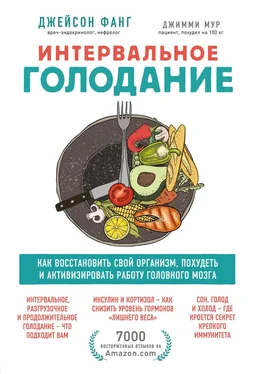


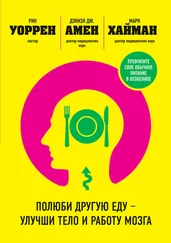
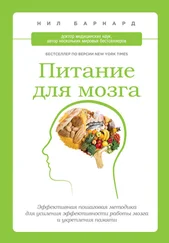
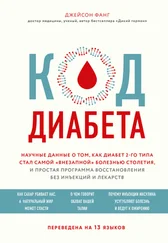

![Джейсон Фанг - Дикий гормон [Удивительное медицинское открытие о том, как наш организм набирает лишний вес, почему мы в этом не виноваты и что поможет обуздать свой аппетит] [litres]](/books/406883/dzhejson-fang-dikij-gormon-udivitelnoe-medicinsko-thumb.webp)
